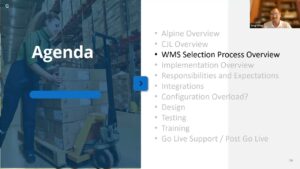Content from: Robert J. Bowman, SupplyChainBrain
To comply with a new emissions reporting requirement by the Securities and Exchange Commission, public companies need to be able to measure their supply chain emissions, says Michael Wohlwend, managing principal with Alpine Supply Chain Solutions.
Just about every company has an initiative promoting sustainability and compliance with environmental, social and governance (ESG) requirements, and reduction of their carbon footprint. “Unfortunately,” Wohlwend says, “nobody knows where they’re at” in such efforts.
They’ll have to move quickly to close the gap between promise and execution, however. As of the first quarter of 2025, the U.S. Securities and Exchange Commission will begin requiring public companies to disclose their greenhouse gas emissions in the Scope 1 and 2 categories, as defined by the Greenhouse Gas Protocol — those that emanate from their direct operations as well as from purchases of energy.
That’s just the beginning, however, of the requirements that companies can eventually expect to encounter. For now, SEC has left out Scope 3 emissions — those generated by a company’s independent supply chain partners, over which it has no direct control. And 74% of a company’s total carbon footprint falls within its greater supply chain, including suppliers upstream and customers downstream. “Trying to understand the end metric is the number-one initiative for a public company,” Wohlwend says.
To undertake the effort to measure carbon emissions, companies need to start within their own organizations, and determine how far along they are in that area. Then they need to begin working with key supplier and customers, and gauge the willingness of those entities to share the necessary data.
Wohlwend is pleased that the C-suite is beginning to acknowledge that action must be taken. The problem is that accurate measurement can’t happen without the proper metrics in place. So top executives might set a target for emissions and cost reduction, at which point “the burden becomes on the operational team at a lower level of how to get what the C-suite asked for.” As a result, the effort “gets diluted as you go through the process.”
Watch the full video on SupplyChainBrain, here.













